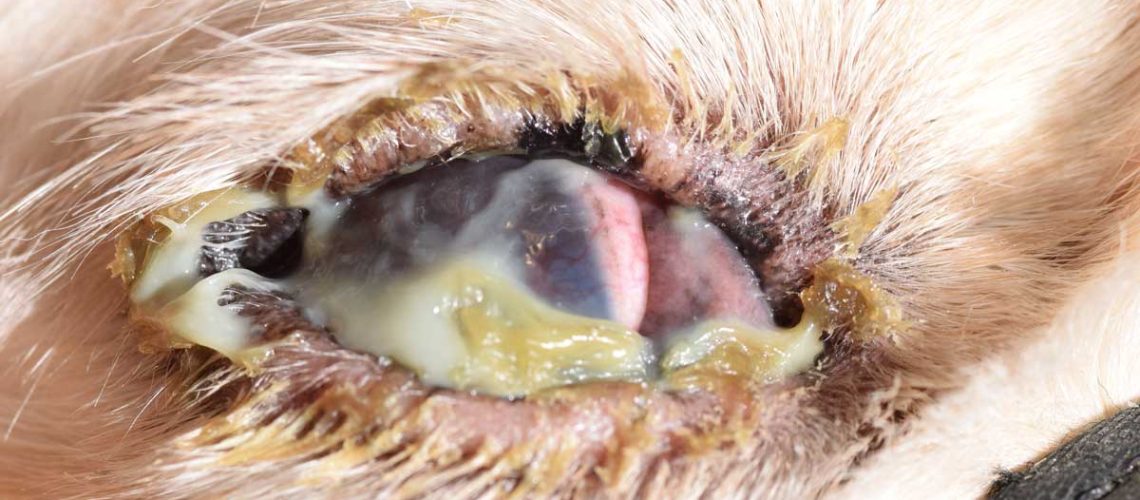Key Takeaways:
-
1. Dry eye, also known as keratoconjunctivitis sicca, is a common condition in dogs where the tear glands do not produce enough tears to keep the eyes properly lubricated.
2. Symptoms of dry eye in dogs include redness, discharge, squinting, and frequent blinking.
3. Treatment for dry eye typically involves using artificial tears or ointments to help lubricate the eyes and stimulate tear production.
4. Left untreated, dry eye can lead to corneal ulcers, infections, and even vision loss in severe cases.
5. Regular veterinary check-ups and early detection are crucial for managing dry eye in dogs and preventing complications.
Are you a dog lover who wants to ensure your furry friend is happy and healthy? If so, understanding the topic of dry eye in dogs is essential. Dry eye, also known as keratoconjunctivitis sicca, is a common condition that affects many dogs. By delving into this subject, you can gain valuable insights into the symptoms, causes, and treatments of dry eye, allowing you to provide the best care for your beloved pet. With clear and simple language suitable for a 7th grader, let's explore this fascinating topic together and discover how we can keep our canine companions' eyes bright and healthy. So grab a seat and get ready to dive into the world of dry eye in dogs!
Understanding Dry Eye in Dogs: A Concern for Their Health
What is Dry Eye in Dogs?
Dry eye, also known as keratoconjunctivitis sicca (KCS), is a common condition that affects dogs. It occurs when the tear glands in a dog's eyes do not produce enough tears to keep their eyes adequately lubricated. Tears are essential for maintaining the health of the eyes, as they help protect against infections and provide necessary moisture.
Why is Dry Eye a Concern for Dogs?
Dry eye can cause discomfort and lead to various complications if left untreated. The lack of tears can result in dryness and inflammation of the cornea, which is the transparent outer layer of the eye. This can lead to redness, irritation, and even ulcers on the surface of the eye. Additionally, without proper lubrication, dogs may experience blurred vision or develop secondary bacterial infections.
How Dry Eye Develops in Dogs and Common Symptoms to Look Out For
How Does Dry Eye Develop in Dogs?
Dry eye typically develops when there is an immune-mediated destruction of the tear glands or damage to the nerves that stimulate tear production. Certain medications, genetic factors, or underlying health conditions can contribute to this condition.
Common Symptoms of Dry Eye in Dogs
It's important for dog owners to be aware of common symptoms that may indicate dry eye. Some signs include excessive blinking or squinting, redness and inflammation around the eyes, discharge from the eyes that may be thick or yellowish-green in color, and a dull appearance of the cornea. If you notice any of these symptoms in your furry friend, it's crucial to consult with a veterinarian for a proper diagnosis.
- Excessive blinking or squinting
- Redness and inflammation around the eyes
- Thick or yellowish-green discharge from the eyes
- Dull appearance of the cornea
Treating Dry Eye in Dogs: Common Options Available
Artificial Tears and Lubricating Ointments
One common treatment for dry eye in dogs is the use of artificial tears or lubricating ointments. These products help to replace the natural tears that are lacking and provide moisture to the eyes. They can be administered directly into the eyes multiple times a day, as recommended by a veterinarian.
Medications to Stimulate Tear Production
In some cases, medications may be prescribed to stimulate tear production in dogs with dry eye. These medications work by increasing tear production from the remaining functional tear glands. It's important to follow the veterinarian's instructions carefully when administering these medications, as they may have potential side effects.
Are Certain Dog Breeds More Prone to Developing Dry Eye?
Breeds Prone to Dry Eye
While dry eye can affect any dog breed, certain breeds are more prone to developing this condition. Some of these breeds include Shih Tzus, Bulldogs, Pugs, and Cocker Spaniels. This increased susceptibility may be due to genetic factors or anatomical differences in their tear glands.
The Importance of Early Detection
Early detection of dry eye is crucial, especially for these susceptible breeds. Regular veterinary check-ups and monitoring for symptoms can help identify dry eye at its early stages. Prompt diagnosis and treatment can prevent further complications and ensure your furry friend's well-being.
The Complications of Untreated Dry Eye in Dogs
Corneal Ulcers and Infections
If left untreated, dry eye can lead to corneal ulcers, which are open sores on the surface of the eye. These ulcers can become infected, causing further discomfort and potential vision loss for your dog. Regular veterinary care and appropriate treatment are essential to prevent such complications.
Chronic Discomfort and Pain
Dry eye can cause chronic discomfort and pain for dogs. The lack of moisture in their eyes can lead to constant irritation, redness, and inflammation. This can significantly impact their quality of life and overall well-being. Treating dry eye promptly can help alleviate these symptoms and ensure a happier, healthier pup.
Preventing and Managing Dry Eye in Dogs for Their Well-being
Regular Eye Care Routine
To prevent dry eye in dogs, it's important to establish a regular eye care routine. This includes gently wiping around the eyes with a clean cloth to remove any discharge or debris that may accumulate. However, it's crucial not to use any harsh chemicals or products near the eyes without veterinary guidance.
Annual Veterinary Check-ups
Regular visits to the veterinarian are essential for maintaining your dog's overall health, including their eye health. Annual check-ups allow veterinarians to monitor any changes in tear production or detect early signs of dry eye. Early intervention can prevent complications and ensure proper management of this condition.
By understanding the development, symptoms, treatment options, breed predisposition, complications of untreated dry eye, as well as prevention and management techniques, you can provide your furry friend with the best possible care for their ocular health. Remember to consult with a veterinarian for personalized advice tailored specifically to your dog's needs. Your diligence will contribute to their overall well-being and happiness!
In conclusion, dry eye in dogs is a condition where their eyes do not produce enough tears. It can cause discomfort and potential damage to the eyes, but with proper treatment and care, dogs can live comfortably with this condition.
How do you treat dry eye in a dog?
The most frequently used treatment for dry eyes is Ciclosporin eye drops, also known as 'Optimmune'. These drops work by soothing the immune system and stopping it from harming the tear glands. It may take 2-8 weeks to see the full effects of the treatment, and if it is effective, it should be used long-term.
Can a dog recover from dry eye?
Dry eye can be a temporary issue that can improve with treatment and time, depending on the cause. However, in most dogs, dry eye is a permanent condition that cannot be cured, but it can be managed.
How serious is dry eye in dogs?
When it comes to dry eye symptoms, your dog's eye will become red and swollen, and there may be mucus or discharge. In some cases, this can cause ulcers on the cornea. This condition can lead to infection, and if not treated correctly, your dog may even lose their eye.
What happens if dry eye in dogs is left untreated?
If not treated, dry eye can result in the development of painful ulcers that have the potential to rupture or cause permanent blindness due to pigment build-up. Some less common causes include certain medications, such as oral antibiotics containing sulfonamide, and genetic factors that lead to abnormally small glands.
Can dehydration cause dry eye in dogs?
If your pet's eyes appear sunken or dry, it could be a sign of dehydration and should be addressed by a veterinarian. Additionally, you can perform a skin turgor test to further assess signs of dehydration in your pet.
How much does it cost to treat dry eye in dogs?
Typically, the condition is managed with outpatient appointments. Each visit to the veterinarian costs around $100, which covers the cost of medication. Parotid duct transposition surgeries are estimated to cost $1,900, while tarsorrhaphy procedures range from $1,000 to $2,000 (excluding post-treatment care).

















